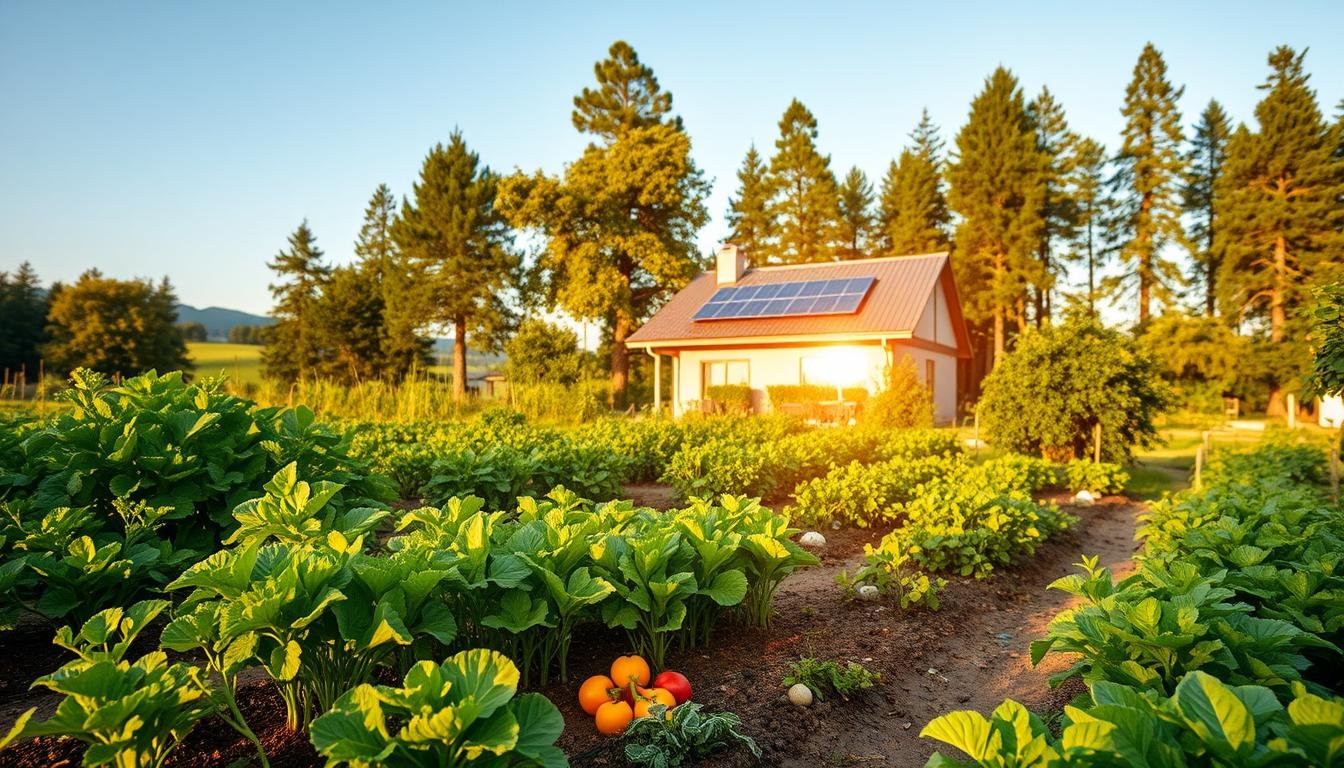Waste management is a big issue today. We need to find ways to make our world more sustainable. This means using methods that reduce waste and use resources better.
We will look at five simple ways to cut down on waste. These ideas can help us make our planet cleaner and healthier. By following these steps, we can ensure a better future for all.
Understanding Zero Waste Solutions
Zero waste solutions aim to reduce, reuse, and recycle to cut down waste and save resources. By using these methods, people and companies can help the environment a lot. For instance, picking products with less packaging or using reusable containers can greatly reduce waste.
Also, using items like shopping bags or water bottles again instead of throwing them away helps a lot. Simple actions like these can lead to a greener future.
Adopting a Circular Economy Approach
Implementing Reduce, Reuse, and Recycle Strategies
Using Reduce, Reuse, and Recycle Strategies is key to zero waste solutions. By cutting down on what we use, using things again, and recycling, we can lessen waste and help the planet.
For example, instead of buying plastic water bottles, carry a reusable one. You can also use old glass jars for storing things at home.
Recycling paper, plastic, and glass also saves natural resources and cuts down pollution. Adding these habits to our daily lives can make a big difference.
Utilizing Sustainable Packaging
Choosing eco-friendly packaging is a big part of zero waste solutions. Companies can lessen their environmental footprint by picking packaging that’s good for the planet.
Using biodegradable materials, like plant-based plastics or compostable paper, is a good start. It helps reduce waste and supports a circular economy.
Also, picking packaging that has less waste, like no extra plastic, helps a lot. Sustainable packaging is a chance for both businesses and consumers to make choices that help the planet.
Encouraging Product Repair and Refurbishment
Encouraging fixing and refurbishing products is vital for zero waste solutions. It helps products last longer, cuts down on waste, and supports sustainability.
Fixing a broken phone instead of buying a new one saves money and reduces electronic waste. Giving old furniture a new life by refurbishing it also stops it from ending up in landfills. These actions show how important repair and refurbishment are in fighting waste.
Promoting Composting Techniques
Benefits of Composting
Composting is a big help in zero waste solutions. It turns organic waste like food scraps and yard trimmings into soil that’s good for plants.
This process also cuts down on the need for chemical fertilizers and helps keep soil moist, which is good for plants. Composting is a simple way to reduce waste and create a cycle of sustainability.
Creating Community Composting Programs
Starting Community Composting Programs is a great idea for zero waste solutions. These programs get people in the community to compost their organic waste, which helps reduce landfill waste. By helping out, communities can make composting programs that help the environment and the community.
In some places, people get compost bins and learn how to compost. Workshops and demos can also teach people how to compost right.
These programs are key in teaching people how to manage waste better and making them care more about the environment.
Utilizing Vermicomposting
Utilizing Vermicomposting in Zero Waste Solutions
Vermicomposting is a green way to handle organic waste. It uses worms to break down food and other organic stuff. This turns waste into compost that’s good for plants and gardens.
It’s popular with people, community gardens, and small farms. Adding vermicomposting to your zero waste plan helps the planet.
Implementing Extended Producer Responsibility
Shifting the Burden to Producers
Making producers responsible for their products is key in zero waste. It pushes them to make greener products. For example, Extended Producer Responsibility (EPR) makes them handle product disposal and recycling.
This makes them think about waste and packaging. It also encourages them to innovate and make production greener.
By focusing on producers, we aim for a circular economy. This means less waste, saved resources, and less harm to the environment.
Plastic Bottle Deposit Programs
These programs help reduce waste and boost recycling. They give a refund for plastic bottles returned. This motivates people to recycle instead of throwing bottles away.
They’ve worked well in many places, leading to more recycling and cleaner areas. They’re a simple way for people to help the planet.
Electronic Waste Take-Back Initiatives
These initiatives are key for handling electronic waste. They encourage people to return old electronics for recycling or safe disposal.
This way, we can get valuable materials back and avoid harming the environment. For example, they make sure hazardous parts are handled safely.
They also teach people about the harm of electronic waste. This encourages them to buy and use products more sustainably.
Investing in Waste-to-Energy Technologies
Harnessing Energy from Waste
Turning waste into energy is a big part of zero waste. Instead of throwing it away, we can use it.
Anaerobic digesters turn food waste into biogas for heat or power. Incineration burns waste to make electricity.
These methods show how we can make energy from waste. They help us use less of the earth’s resources and reduce waste harm.
Anaerobic Digestion for Biogas Production
Anaerobic digestion is a green way to make biogas. It breaks down organic stuff without oxygen, making biogas for energy.
It’s used in wastewater plants to make biogas for energy. It’s also used in farming to make biogas and cut down on greenhouse gases.
By using anaerobic digestion, we can manage organic waste and make biogas. This helps communities and industries move towards a circular economy.
Incineration with Energy Recovery
Incineration with energy recovery is a great way to manage waste. It burns waste at high temperatures, making heat and electricity. This method cuts down on landfill waste and uses the energy made.
This energy can power nearby buildings or even go back to the grid. So, it helps in reducing waste and using energy wisely.
Fostering Sustainable Consumption Habits
Educating Consumers on Zero Waste Principles
Learning about zero waste is key for those wanting to help the environment. Knowing the harm of single-use items helps make better choices. This can lead to less waste.
For example, using reusable bags and refillable water bottles instead of disposable ones. Learning about sustainable items like composting and cloth napkins helps a lot. It’s a small step towards a zero waste life.
By knowing these tips, people can help reduce waste and protect our planet.
Promoting Bulk Shopping and Refill Programs
Bulk shopping and refill programs are vital for zero waste. They cut down on packaging waste and save money.
Offering bulk items like grains and cleaning supplies helps avoid waste. It also means buying only what you need.
Refill programs for personal care items like shampoo and soap also reduce packaging. This makes shopping more sustainable. Teaching customers about these options helps them make eco-friendly choices.
Encouraging Conscious Buying Decisions
Making smart choices when buying is key for zero waste. Choosing products with less packaging helps a lot. It’s a big step towards a greener lifestyle.
Prefer products made from sustainable materials like bamboo. This reduces our use of single-use items. Knowing the impact of our purchases is the first step to change.
Key takeaways
This article talks about five ways to manage waste better. It focuses on zero waste solutions like recycling and reusing. It also talks about the circular economy and designing products with less waste.
It stresses the importance of community involvement and education. These steps help reduce landfill waste and protect our environment for the future.







